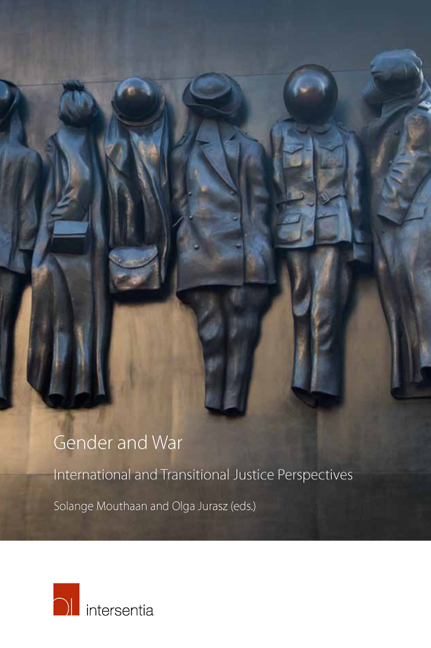Book contents
- Frontmatter
- Contents
- List of Cases
- List of Abbreviations
- List of Contributors
- Introduction
- PART I WOMEN'S INVOLVEMENT IN ARMED CONFLICT
- How and Why Women Participate in Armed Conflict: A Population-Level Quantitative Model
- Female Perpetrators in the Former Yugoslav Republic and Rwanda: Disrupting Common Understandings
- Female War Crime Perpetrators in Bosnia and Herzegovina
- PART II MEN AND CHILDREN'S EXPERIENCES OF ARMED CONFLICT
- PART III GENDERED EXPERIENCES OF INTERNATIONAL CRIMINAL JUSTICE
- PART IV GENDERED EXPERIENCES OF TRANSITIONAL JUSTICE
- PART V CONCLUSIONS
- About the Editors
Female War Crime Perpetrators in Bosnia and Herzegovina
from PART I - WOMEN'S INVOLVEMENT IN ARMED CONFLICT
Published online by Cambridge University Press: 30 March 2019
- Frontmatter
- Contents
- List of Cases
- List of Abbreviations
- List of Contributors
- Introduction
- PART I WOMEN'S INVOLVEMENT IN ARMED CONFLICT
- How and Why Women Participate in Armed Conflict: A Population-Level Quantitative Model
- Female Perpetrators in the Former Yugoslav Republic and Rwanda: Disrupting Common Understandings
- Female War Crime Perpetrators in Bosnia and Herzegovina
- PART II MEN AND CHILDREN'S EXPERIENCES OF ARMED CONFLICT
- PART III GENDERED EXPERIENCES OF INTERNATIONAL CRIMINAL JUSTICE
- PART IV GENDERED EXPERIENCES OF TRANSITIONAL JUSTICE
- PART V CONCLUSIONS
- About the Editors
Summary
INTRODUCTION
Most of the literature on women and warfare, or women and genocide, analyses women's role from a victim-centred perspective. Although research has shown that most perpetrators are men, women too have been involved in the perpetration of war crimes. Yet research and literature on the role of women as war criminals and enablers of genocide remain staggeringly meagre, especially compared with the weight of research preoccupied with women as victims of violence rather than its agent. The existing scholarship on women perpetrators or active supporters of violent regimes is largely focused on the role of women in Nazi Germany or, more recently, women who committed acts of genocide in Rwanda. However, as the evidence suggests, women, in much larger numbers than usually presumed, can become active agents of genocide and torture – and their role and motivations therefore demand greater attention. Sjoberg and Gentry propose that women today are continuously being idolised as pristine and pure objects incapable of mass murder and genocidal behaviour. They argue that convicted female perpetrators, instead of becoming a representation of female capabilities in the perpetration of genocide, tend to be stripped of agency, with the severity of their actions reduced to pure happenstance, or the result of male manipulation or previous abuse. Alternatively, these women are characterised as mentally disturbed, or wicked, with a deviant sexual appetite. Sjoberg and Gentry call this the mother/monster/ whore narrative. In short their argument is that, female perpetrators are generally not perceived as being real women.
Although Bosnia and Herzegovina (BiH) became notorious for war crimes committed primarily against women, this chapter will explore the role of women in BiH as perpetrators during the armed conflict of the 1990s, in order to get a better insight in the agency of women who commit such crimes. Apart from Biljana Plavšić, the former co-President of the Bosnian Serb leadership whose case has received international publicity (as the first and only woman tried before the International Criminal Tribunal for the former Yugoslavia (ICTY)), so far there has been little scholarly interest in female perpetrators of war crimes. Yet, over the past few years, several women have been charged with committing war crimes before the Bosnian domestic courts.
- Type
- Chapter
- Information
- Gender and WarInternational and Transitional Justice Perspectives, pp. 65 - 92Publisher: IntersentiaPrint publication year: 2019
- 2
- Cited by

